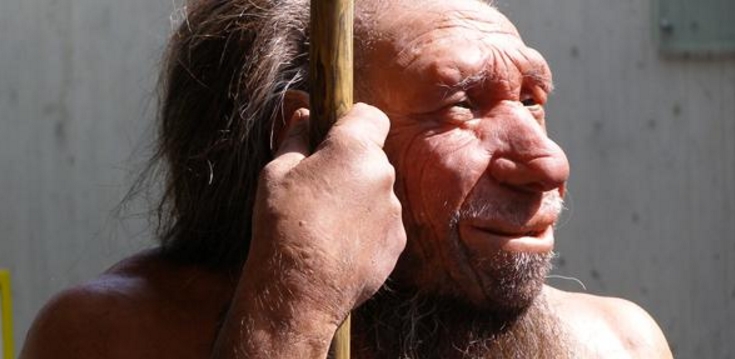Some of the human X chromosome originates from Neanderthals and is found exclusively in people outside Africa, according to an international team of researchers led by Damian Labuda of the Department of Pediatrics at the University of Montreal and the CHU Sainte-Justine Research Center. The research was published in the July issue of Molecular Biology and Evolution.
“This confirms recent findings suggesting that the two populations interbred,” says Dr. Labuda. His team places the timing of such intimate contacts and/or family ties early on, probably at the crossroads of the Middle East.
Neanderthals, whose ancestors left Africa about 400,000 to 800,000 years ago, evolved in what is now mainly France, Spain, Germany and Russia, and are thought to have lived until about 30,000 years ago. Meanwhile, early modern humans left Africa about 80,000 to 50,000 years ago. The question on everyone’s mind has always been whether the physically stronger Neanderthals, who possessed the gene for language and may have played the flute, were a separate species or could have interbred with modern humans. The answer is yes, the two lived in close association.
“In addition, because our methods were totally independent of Neanderthal material, we can also conclude that previous results were not influenced by contaminating artifacts,” adds Dr. Labuda.
Dr. Labuda and his team almost a decade ago had identified a piece of DNA (called a haplotype) in the human X chromosome that seemed different and whose origins they questioned. When the Neanderthal genome was sequenced in 2010, they quickly compared 6000 chromosomes from all parts of the world to the Neanderthal haplotype. The Neanderthal sequence was present in peoples across all continents, except for sub-Saharan Africa, and including Australia.
“There is little doubt that this haplotype is present because of mating with our ancestors and Neanderthals. This is a very nice result, and further analysis may help determine more details,” says Dr. Nick Patterson, of the Broad Institute of MIT and Harvard University, a major researcher in human ancestry who was not involved in this study.
“Dr. Labuda and his colleagues were the first to identify a genetic variation in non-Africans that was likely to have come from an archaic population. This was done entirely without the Neanderthal genome sequence, but in light of the Neanderthal sequence, it is now clear that they were absolutely right!” adds Dr. David Reich, a Harvard Medical School geneticist, one of the principal researchers in the Neanderthal genome project.
So, speculates Dr. Labuda, did these exchanges contribute to our success across the world? “Variability is very important for long-term survival of a species,” says Dr. Labuda. “Every addition to the genome can be enriching.” An interesting match, indeed.
About the study:
“An X-linked haplotype of the Neandertal origin is present among all non-African populations” was published in the July 2011 issue of Molecular Biology and Evolution. The authors are Vania Yotova, Jean-Francois Lefebvre, Claudia Moreau, Elias Gbeha, Kristine Hovhannesyan, Stephane Bourgeois, Sandra Be´darida, Luisa Azevedo, Antonio Amorim, Tamara Sarkisian, Patrice Hodonou Avogbe, Nicodeme Chabi, Mamoudou Hama Dicko, Emile Sabiba Kou’ Santa Amouzou, Ambaliou Sanni, June Roberts-Thomson, Barry Boettcher, Rodney J. Scott, and Damian Labuda.
The study was supported by grants from the Canadian Institutes of Health Research.
Interview and information requests:
William Raillant-Clark
International Press Attaché
University of Montreal (officially Université de Montréal)
514-343-7593
w.raillant-clark@umontreal.ca
w.raillant-clark@uMontreal_News
Marise Daigle
Communications
CHU Sainte-Justine Research Center
514-345-4931, extension 3256
Source:
Danielle Buch
Applied Clinical Research Unit
CHU Sainte-Justine Research Center





